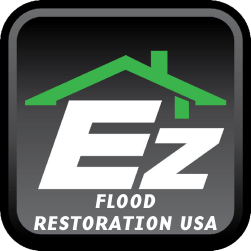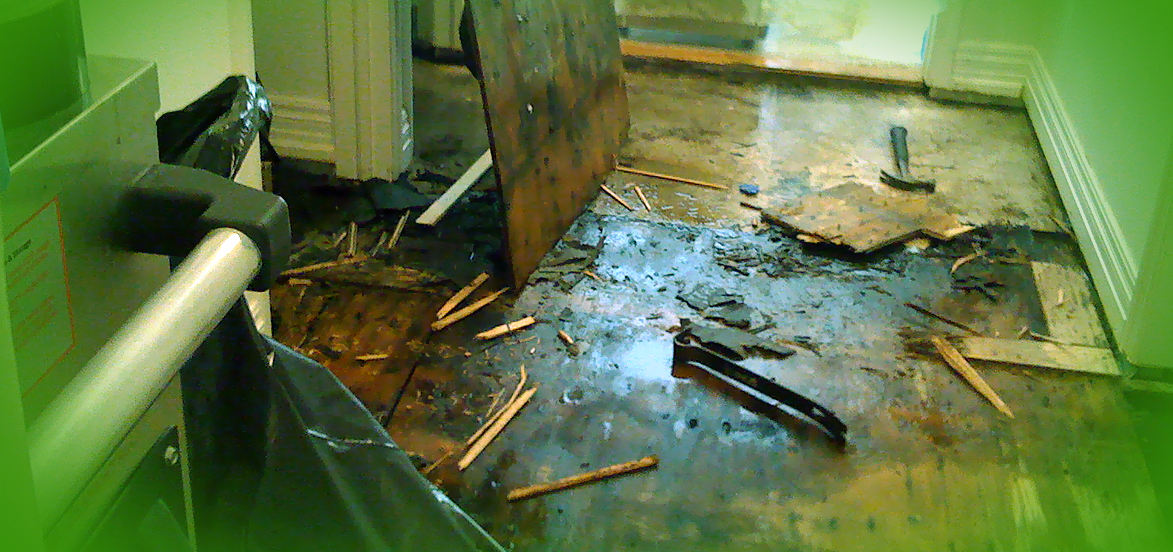How To Get A Concrete Floor Dry Again After Flood Damage
Maybe because of rain, a river spill, or a storm, floods can create much damage in the wake of their path. The property damage because of a flood can range from various degrees of destruction, but your floors might be the primary risk. Cleaning up after a flood is usually the most prompt and significant action that people suggest in response. So we have created a guide that will give you insights into a safe assessment after flood damage and teach you the right way for flood damage restoration after a flood to avoid further damage to essential property. Also, you should definitely take advice from your local authorities and professionals to find the right thing to do.
Steps For Initial Assessment And Inspection For Best Safety.
Homes that are flooded can be hazardous depending on the chemicals that might mix with water. So you should be early when notifying the authorities about the disaster and hire professionals for water damage restoration.
- The first step in a flooded home is to reach your insurance company to provide a timestamp for the disaster.
- You should also ensure not to step in puddles and water bodies during your water damage cleanup if the power inside your home is on. Water electrocution is not always visible but can always be a threat during bad flood cases.
- Examine the exterior of your home before entering the premises because visible structural damage and cracks can describe the severity of the issue inside.
- You should ensure that the gas service and electricity are off when you first return to your home.
- You should also make a list of inventory damage your home received with pictures as you will have to present it to the insurance company.
- If you are assessing the flood damage restoration first, wear protective gear inside. The equipment includes eye protection, sturdy waterproof boots, and durable rubber gloves to eliminate the chance of water touching you.
- Water can be a home to annoying insects, snakes, and other animals that love that environment. So you should always look out for them and prevent them from creating a nest.
- If your home is experiencing cracks or any exterior damage, then refrain from opening the doors unless you are unconditionally sure of its safety. Sometimes entries can support the collapsing frame above it, and opening them can result in serious injuries.
- Open windows if possible to ventilate the home and ensure your cleaning experience goes smoothly. Still, water inside a closed space can make it smell foul, especially if it is mixed with other chemicals.
- Do not connect any light to the electrical sources inside your home. Always use torches that have batteries to search for objects if you need to.
- Last but not least, refrain from running any generators that run by gas inside the apartment during your water damage restoration. Gas can definitely flow out if your machine is exposed to water and can even pose a threat of electrocution.
Remove And Discard Any Salvage From Your Flooded Home
You should take the time to remove all materials that are waterlogged, including any beddings or carpets from your home, within twenty-four hours of flooding. Long-term floods will likely end up running most of the contents of your home.
- You should discard all materials on site after you ensure that the insurance company takes notice before your water damage cleanup.
- You can replace the rugs and carpets that are wet and contaminated if things are terrible. Or you can try getting them washed, but the padding always needs replacement.
- If you have any upholstered furniture or mattresses, you should always discard them as they can grow mold very quickly.
- You should always look out for any metal, plastic, and solid wood furniture as you can salvage them as per your needs during flood damage restoration. You can take them out to hose off the mud, sanitize, and clean the object by letting it slowly dry away from direct sunlight.
- Also, ensure to discard any commercial food products if they are not sealed. If they have excellent and durable packaging, they are fit for salvage. But you should always run your tests and keep what you need.
- Remove all furniture and other things that you have in your house to ease the cleaning process of the structure.
Drying And Cleaning Your Room That Is Flooded.
Remove all the mud and silt accumulated inside your house using a durable shovel or another appropriate tool. After that, you can use a garden hose and running water to wash surfaces off from dirt. The cleaning process of your room should commence as soon as the water dries off to prevent mold growth. When you restore moisture, you can use dehumidifiers to fan through the home to enhance the water damage restoration, which can take several weeks. Floors You should commence the drying process of your home as soon as it is possible after you remove the padding or other flooring.
- Wood subfloors will surely swell if you submerge them for extensive periods, and then you will have to replace the affected portions.
- Wooden floors generally are not friendly to floodwater and submerging, so you may have to remove them.
- If you have tile floors, you can salvage them during the water damage cleanup, but always check for any water damage and dry it.
Walls
Open all flood walls to prevent any odor and slow growth of mold. This process will also stop the decay of studs inside your walls.
- You should try to remove any baseboard trims you may have in your walls that are affected by water.
- You should also remove the drywall laying one foot above the waterline as it could absorb existing water even after draining.
- You can panel or plaster the walls during flood damage restoration to save them, but it is also essential to circulate air in the walls' cavities to dry the area.
- If your wall has any insulation that could have been dampened due to the water leak, you should promptly go and remove them from inside the wall.
- You can see visible mud if they are sticking on wall studs, and you can spray them with disinfectants to clean them and control the growth of mold.
- You can pressure wash brick walls on the exterior walls, while your wood and Masonite may need replacement if damaged by water.
Basement
- You should pump out the basement if it is flooded by draining two feet of water every day. This procedure can help you avoid any structural damage to the basement walls. If your flood pumps out wholly and quickly, the pressure from water and soil outside can cause the basement walls to collapse, and the house can acquire significant damage.
- You can purchase a pump or dry vacuum and even rent one to remove all the water inside your house.
- It is equally important to use a dehumidifier during water damage restoration to drain all the water inside the basement lying in woodwork and under the walls.
- You should note that concrete is a porous material, so the foundation's internal composition will need sanitization, cleaning, and drying.
Ways To Dry Your Home
Extracting Water
If your household has flooded, the first thing you should do is to pump them out of the area. Special water vacuums help dry your home and eliminate every single vapor inside every room. These vacuums are so versatile that they can even work on furniture, carpets, and cushions affected by water flooding.
Air-drying
Air drying is a very effective method for removing any flood water inside your home if the affected area is minimal and you want to begin the remedy quickly. If you place large fans around the room, you will increase the circulation of humidity and airflow in and out of the area. However, the same will not be effective if the affected area is large and has been that way for several days.
Dehumidification Machines
Dehumidification machines are highly effective for drying an affected area inside your home. After extracting the water, the dehumidifiers will start removing moisture from a particular place and the air surrounding those materials. You should run your dehumidification tool until you are sure that the moisture levels are in the mood to be dry enough.
If You Are Facing Difficulty, Let Our Professional Flood Helpers Aid You
If you hire our professionals to do your water damage cleanup, you do not only pay for their skills. You will also gain good access to adequate and quick processes of drying. We can also inspect your home thoroughly to remove excess moisture and water to find a solution to dry out every material type. We will also conduct thorough moisture ratings to ensure the water damage restoration process they are applying is working out well. However, we can give you a comprehensive and detailed report to provide everything they do is notified to you. You can avail of various services, and professionals do not end up charging you for something you do not need.


